
.com

Estd. 2020
Centenary
Project
2027

Approved by the Shaw Family







"The head, the tail...the whole damn thing!"

"There was something about his presence which made it impossible for you to take your eyes off him. You could pick him out instantly in a crowd." - Sybil Burton

trailer
Robert Shaw as Quint

A New England seaside town's tourist season is turned into a nightmare by a giant killer shark. The local police chief's efforts to protect the public are thwarted by the greedy mayor, forcing him to join forces with a grizzled fisherman and an enthusiastic marine biologist to hunt and kill the monster predator.
Directed by Steven Spielberg
Screenplay by Peter Benchley and Carl Gottlieb from the novel by Peter Benchley
Produced by Richard D. Zanuck and David Brown
Music by John Williams
Cinematography by Bill Butler
Edited by Verna Fields
Also starring Roy Scheider, Richard Dreyfuss, Lorraine Gary, Murray Hamilton, Jeffrey Kramer, Lee Fierro, Carl Gottlieb and Susan Backlinie
Released by Universal Pictures
Release Date: June 20th 1975
Running Time: 124 minutes
Location(s): Martha's Vineyard, Massachusetts, California and Australia
Filming Dates: May 2nd - September 18th 1974
WINNER OF 3 ACADEMY AWARDS
Best Editing, Best Sound and Best Music





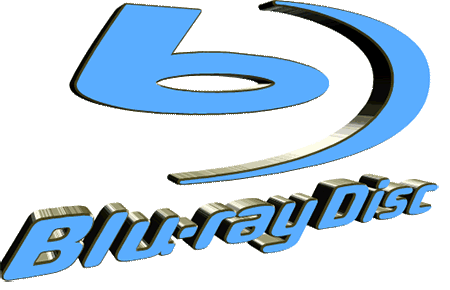
Robert first sang "Spanish Ladies" in an episode of The Buccaneers in 1956.






gallery







amity island welcomes you

Dreyfuss on Shaw
Modern Theatrical Trailer
Dreyfuss gives a candid reflection on his relationship with Robert.
Enjoy this visceral modern trailer of the 1975 movie classic.
Steven Spielberg On Location
Rare on location interview with Steven Spielberg on location at Martha's Vineyard presented by Iain Johnstone.
Jaws 50TH ANNIVERSARY imax trailer
imax trailer for the 50th anniversary re-release


Jaws: The Inside Story
The Shark Is Still Working
A fascinating programme that goes behind the scenes of Steven Spielberg's landmark 1975 film Jaws.
Must see documentary on the Legacy and Impact of Jaws. Narrated by Roy Scheider.
New England Our Way (1974)
In the Teeth of Jaws
On location at Martha's Vineyard. For the first time ever this is the full uncut version of the documentary featuring a superb interview with Robert.
BBC Television Documentary with some great stories about Robert.

Quint's USS Indianapolis Speech
Re-live the greatest piece of film acting ever in 4K Ultra HD.
Filmed Tuesday June 11th and Wednesday June 12th 1974.
Rare Jaws Interviews (1974)
Jaws author Peter Benchley speaks to Robert.

Jaws: Deleted Scenes
How the scene should have looked
Scenes and outtakes that never made it into the final film.

Hershel West re-inserted into the scene that made the final print.
Jaws: The Restoration
JAWS@50 DOCUMENTARY TRAILER
A fascinating insight at the digital restoration of the movie for its Blu Ray release.
TRAILER FOR THE NATIONAL GEOGRAPHIC DOCUMENTARY.
Richard Dreyfuss Interview
Jaws: Memories From Martha's Vineyard
Richard Dreyfuss gets very emotional about Robert on the RTE Late Show in 2014 when he met Robert's granddaughter Maeve.
Short film about Edith Blake's celebrated book.
Carl Gottlieb Interview
A fascinating interview about the writing of the Indianapolis speech and Robert's role within it.
Jaws Official Soundtrack
Re-live the world famous Oscar winning soundtrack by John Williams.
spielberg remembers shaw
steven spielberg on the uss indianapolis scene
The Lost Scenes
A more in-depth look at the deleted scenes from Jaws.

cbs sunday morning
CBS SUNDay morning segment from 2025 featuring lorraine gary and richard dreyfuss.
Quint's Demise
For the first time in ultra 4K HD watch Robert meet his end in this gruesome scene from Jaws.







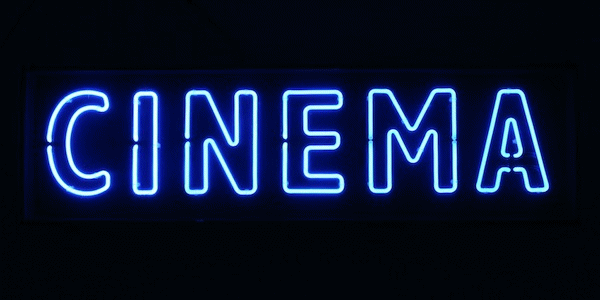



![now showing GIF_thumb[1].gif](https://static.wixstatic.com/media/51f4b8_c475c3f62240416ea489b9651df68e26~mv2.gif)

Press Play



DIRECTOR
Steven Spielberg
(1946 - )


sound gallery
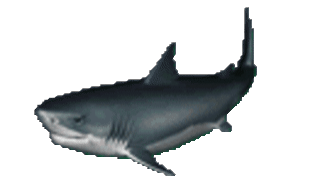
Enjoy this selection of classic Quint sound clips.
Farewell and adieu
Mary Lee
Jesus H. Christ
16 Footer
If they don't
like you...
Better get it right squirt
Break it up chief
Stop playing with yourself Hooper
You go in the
water?
You all know me
Bow-legged women
I've seen fingers
25...3 tonnes of him
Sometimes he
wouldn't go away
Dolls eyes
He might eat it I suppose
Well it proves one
thing Mr. Hooper
God damn women
today!
City Hands
There's too many captains
"Robert Shaw, absolutely magnificent as a coarse fisherman finally hired to locate the Great White Shark."

"Shaw's entrance raised the entire pulse of the work and sent the movie racing."


uss indianapolis

Able Seaman
Quint

The world famous monologue delivered by Quint about the horror of his time on the USS Indianapolis. This draft was largely written by Shaw himself.



Roy
Scheider
(1932 - 2008)

Lorraine
Gary
(1937 - )

Richard
Dreyfuss
(1947 - )
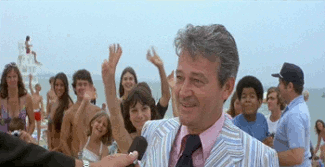
Murray
Hamilton
(1923 - 1986)



Without doubt his most famous role and the movie is a global phenomenon which started the summer blockbuster. The film is perfect from beginning to end. Beset with production problems, going over budget and over schedule and a shark which didn't work, it's miracle this film ever got completed.
Spielberg's visceral direction and John Williams Oscar winning score are just the hors d'oeuvre to a classic and pulsating adventure yarn with a great script and great performances by all the cast.
If you want to see the greatest piece of film acting in the history of cinema then Shaw's self-penned USS Indianapolis speech is the apogee of a stunning career. He is simply magnificent and the fact that he wasn't Oscar nominated along with Spielberg is one of the industries greatest mysteries. A classic and a lasting legacy to greatest screen actor of all time.

Though respected as an actor, Robert Shaw’s trouble with alcohol was a frequent source of tension during filming. In later interviews, Roy Scheider described his co-star as “a perfect gentleman whenever he was sober. All he needed was one drink and then he turned into a competitive son-of-a-bitch.”
According to Carl Gottlieb’s book “The Jaws Log,” Shaw was having a drink between takes, at which one point he announced, “I wish I could quit drinking.” Much to the surprise and horror of the crew, Richard Dreyfuss simply grabbed Shaw’s glass and tossed it into the ocean.
When it came time to shoot the infamous USS Indianapolis Scene, Shaw attempted to do the monologue while intoxicated as it called for the men to be drinking late at night. Nothing in the take could be used. A remorseful Shaw called Steven Spielberg late that night and asked if he could have another try. The next day of shooting, Shaw’s electrifying performance was done in one take.


Lobby Card Gallery
2025 interview with richaRD DREYFUSS FOR JAWS 50
meanwhile...
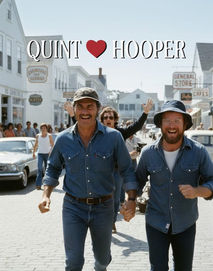

Anyone who hasn’t seen the film will almost certainly be familiar with its basic plot: A killer great white shark terrorizes the New England island town of Amity, and it’s up to chief of police Martin Brody, shark expert Matt Hooper, and captain “Ahab” Quint to stop it.
Spielberg was first interested in the project after walking into producers’ Richard Zanuck and David Brown’s office at Universal Studios and seeing a manuscript that simply read “JAWS”. After reading it, he realised how similar the story was to a TV movie he did called “Duel”, except this would be on the water. He asked Zanuck and Brown to direct it, and because they were pleased with his job on their last project together, THE SUGARLAND EXPRESS, they agreed.
The manuscript later became Peter Benchley’s best-selling novel. His story was very much a product of its time, having subplots that included the mayor of Amity being influenced by the mob to keep the beaches open, and Hooper having an affair with Brody’s wife. Later on after the success of the film, he and his wife became strong advocates for shark protection awareness in response to the negative views the general public had towards them.
Benchley wrote the first couple of drafts of the screenplay, which was then rewritten by an uncredited writer named Howard Sackler. More revisions were made by Carl Gottlieb (who was constantly writing and rewriting scenes on location while playing Meadows, the editor of the local newspaper). Spielberg himself even wrote a draft with a scene or two that made it into the final film. He and Gottlieb both felt the plot would flow better if Benchley’s extra material was removed from the film, creating a seamless story.
The iconic movie poster was designed by artist Roger Kastel for the paperback edition of the novel. He is also best known for designing the poster for THE EMPIRE STRIKES BACK. His inspiration was mainly drawn from a shark exhibit at the Museum of Natural History in New York City. The image has gone on to appear in all sorts of marketing, and has appeared as political and entertainment parodies over the years.
This was the first major film to shoot on the open ocean, which Spielberg insisted on for authenticity. And because of this, all sorts of issues arose simply because the crew did not have control over their environment. The experience for the young director was the most challenging out of all the films he has made, and he has gone on record to say that it still gives him nightmares.
Every fan knows that principal photography occurred on Martha’s Vineyard, an island off Massachusetts’s Cape Cod. According to Richard Dreyfuss, in an interview for the excellent documentary “The Shark Is Still Working”, shooting started on May 1st and was supposed to be scheduled until June 28th. But because of the aforementioned problems at sea, and the mechanical shark infamously not working, the shoot wrapped up about 160 days later.
The island was selected not just for its authentic seaside look, but because it was the only location on the east coast where the crew could film 12 miles out to sea and still have a 30-foot sandy bottom for the device that would support one of the mechanical sharks. But the island had never experienced a major film being shot there before, so the producers had to convince the town leaders to shoot during the height of their summer season.
The star of the film, which Spielberg loving called both “the great white turd” and Bruce after his lawyer, was quite a marvel of engineering at the time. Production designer Joe Alves drew up plans for three separate sharks: two had opposite sides exposed for the connecting hydraulic hoses that would help power them pneumatically, and one was attached to a crane-like boom which connected to a sled that would run along the sea bottom.
Because Universal’s production department was overwhelmed with other projects at the time, Joe enlisted the help of veteran special effects wizard Robert Mattey to build his designs. Bob was best known for making the giant squid in Disney’s 20,000 LEAGUES UNDER THE SEA.
Fortunately, some of their hard work survives today. One of the sharks was found at a southern California junk yard recently and was purchased by the Academy of Motion Pictures Museum.
The stories of the shark not working have been told numerous times over the last 45 years. Dreyfuss is known for his animated recollections in interviews. The machines just weren’t designed to withstand the corrosion that occurs in salt water.
This left Spielberg and Gottlieb to improvise and alter the script to suit the reality of their plight. In doing so, they took inspiration from Alfred Hitchcock and from the original version of THE THING, using the unseen horror method. This turned out to be a blessing in disguise, not showing the shark is what made the film better.
Producer Zanuck has stated that when you do see the shark, that was all the usable footage available. There are times, however, when you see the shark and it is in fact a real great white. This is due to the efforts of Ron and Valerie Taylor, an Australian couple who specialized in the underwater filming of sharks. Many of the shots in the scene where Hooper goes into the shark cage are of this live footage, which includes the shark unexpectedly getting tangled in the cage bridal.
One of the ways in which Spielberg and Gottlieb improvised the script was how they altered the opening scene. Originally you were supposed to see the shark devour Chrissie. But instead, she was dragged back and forth by cables attached to her hips that led to pilings offshore and then back to the beach, where half a dozen people on each cable ran back and forth to achieve the effect.
Spielberg is credited with giving the first downward pull. Another fine example of improvisation was using Quint’s yellow barrels to mark the shark during the chase scenes.
Quint’s boat, the not-so-big but no less famous Orca, which has been compared to the Millennium Falcon and other great ships and vehicles of pop culture. It was originally named the Warlock and was purchased by Joe Alves, who then modified the wheelhouse and upper deck to give it more character. Another replica ship was built specifically to sink and refloat multiple times as needed.
Spielberg hired many locals of Martha’s Vineyard as extras, and some have become fan favourites (“A whaaaat?”). The most memorable roles though, our trio of heroes, were either already established stars or aspiring actors.
Roy Scheider had previously starred in THE FRENCH CONNECTION alongside Gene Hackman, and Spielberg loved him in the role. After playing a NYC cop in that film, he was an obvious choice to play an ex-NYC cop looking to escape that hectic lifestyle and settle in a small community.
Richard Dreyfuss originally turned down the role of Matt Hooper, stating that this was a movie he’d rather watch than film. But after his disappointment with his role in the Canadian film THE APPRENTICESHIP OF DUDDY KRAVITZ, he called up Spielberg begging for the role.
Spielberg’s first choice for Quint was Lee Marvin, who refused to pretend to be fishing when he was already on a fishing expedition. Zanuck and Brown then suggested veteran actor Robert Shaw because of the work they did with him on the film THE STING.
Dreyfuss has stated many times in interviews how he was both astonished and infuriated with Shaw throughout filming. Dreyfuss was an up and coming actor while Shaw was an established theatre and film star, so the elder would constantly haze him. But Dreyfuss never lost his respect for Shaw, even after he passed away.
It is widely believed that Chief Brody’s famous line, “You’re gonna need a bigger boat”, was improvised by Scheider on the spot. For years screenwriter Carl Gottlieb wouldn’t accept credit for it until a fan pointed out to him an interview that Scheider did where he says it was in the script.
Carl basically said he wasn’t claiming credit then because he had forgotten he wrote it. He then recollected that the reason he put the line in the script was because the crew kept complaining about their support barge, the SS Garage Sale, being too small.
Quint’s famous delivery of the Indianapolis Speech is one of the most memorable moments of the film and one of the most famous scenes in film history. It was the result of three people working on it, with Robert Shaw writing the final version.
Most people first learned about the U.S.S. Indianapolis incident from this film, the files having been declassified by our government between the publishing of the novel and the writing of the speech. Peter Benchley once told a story of how his housekeeper had to call in sick the day after she saw the film because she had just learned how her son died.
Speaking of Benchley, he had disagreed with Spielberg on how to end the film. In the novel, the shark drowns after being pierced by a harpoon. Spielberg didn’t think that was a rousing ending, so he came up with the exploding oxygen tank.
When Benchley tried to explain to Spielberg that that was literally impossible, his response was “If I’ve got the audience for two hours, they’ll believe anything I do.” And I agree. This film doesn’t set out to be a hyper-realistic narrative, it’s a horror flick/adventure story. By the time you get to the end of the film you want to see the shark go out in a big way.
The shark exploding was the last shot on location, but it was filmed without Spielberg. He was on a plane back to Los Angeles early because he was afraid the crew was going to through him overboard after filming wrapped. You could argue they’d be justified in doing so. But this ended up becoming a tradition for Spielberg at the end of every future film, not shooting the last shot.
Back in Hollywood, the film went through the usual post-production process. A few scenes still needed to be shot, like the close ups of the shark attacking the cage which was done in a tank.
Another was a pickup shot Spielberg wanted to film in editor Verna Fields’ pool, the famous Ben Gardner’s head jump scare. He had replicated a section of the hull of Ben’s boat, and filmed the scene with the head popping out several ways until he decided which one was the scariest.
At the 1976 Academy Awards, JAWS picked up three Oscars. Spielberg was snubbed for Best Director but got the Best Picture nomination, something that rarely ever happened.
Verna Fields deservedly got an award for crafting a masterpiece (in her pool house) out of what most crew probably thought was going to be a flop, given everything that went wrong during filming. At Universal Hollywood today, she has a building named after her.
Maestro John Williams received his first Oscar for Best Original Score, he had previously won an award for adapting the music to FIDDLER ON THE ROOF for the screen. This marked a turning point in the career of who most people believe to be one of the greatest film composers ever.
John Williams has been responsible for several instantly recognisable and iconic pieces of music during the past four decades, and it all started with this film. Who would’ve thought back in 1975 that a simple two-note theme would resonate throughout pop culture and with so many people 45 years later?
Certainly not Spielberg, at least at first. When Williams played him the theme for the first time on the piano, Spielberg thought it was a joke.
He was expecting something more melodic in nature and not something so primal. But after listening to it several times, and realising that the theme would act as a type of siren declaring the presence of the shark, Spielberg was moved by Williams’s genius.
And so were audiences when they first heard the theme as the film started, and more so as the story changed from a horror flick to an adventure tale. Part of the genius of the score is also where you don’t hear it.
Spielberg and Williams brilliantly decided to have the JAWS theme only play when the shark was actually on screen or its presence suggested. When the audience sees the kids pulling a prank with a cardboard fin, they instinctively know something is off because they have been subliminally conditioned to think that way early on.














































































































